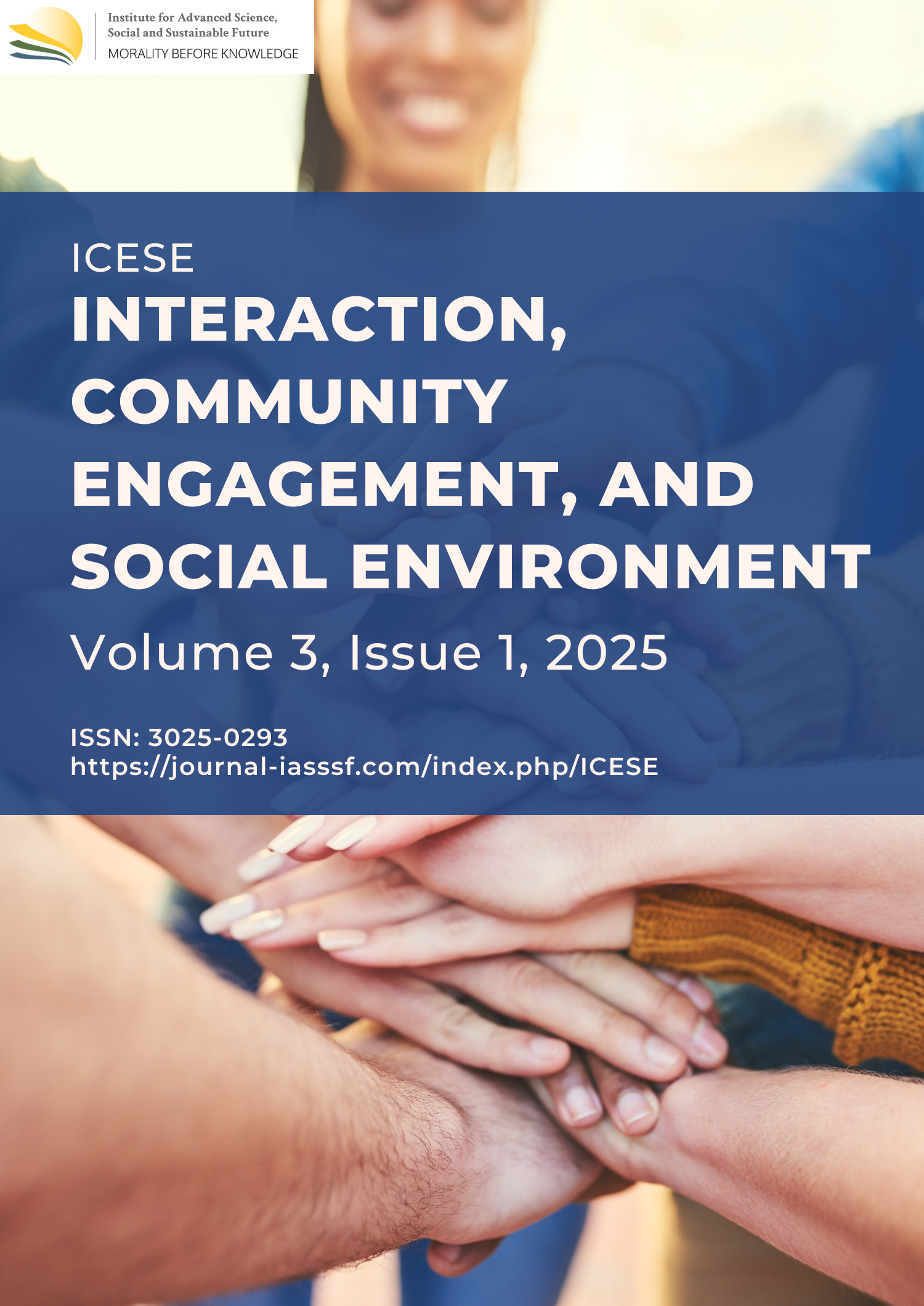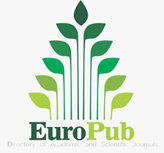The influence of information quality in user-generated content (UGC) behavioral intention to revisit: The mediating role of destination image (a study on Lampung as a tourism object)
DOI:
https://doi.org/10.61511/icese.v3i1.2025.2041Keywords:
destination image, tourist behavior, user-generated contentAbstract
Background: This study aims to investigate the mediating effect of perceived destination image on the relationship between information quality in user-generated content (UGC) and behavioral intention, with a focus on the intention to revisit Lampung as a tourist destination, while extending the Stimulus-Organism-Response (SOR) model by Mehrabian and Russel. Methods: Based on the tourism context in Lampung, a total of 283 valid responses from domestic tourists were collected and analyzed using Partial Least Squares Structural Equation Modeling (PLS-SEM) to test the research hypotheses. Findings: The indirect path analysis results show that cognitive image significantly mediates the relationship between representational information quality and social information quality on behavioral intention to revisit, while affective image serves as a significant mediator in the relationship between representational information quality and contextual information quality on behavioral intention to revisit. Interestingly, this study also found that intrinsic information quality has a significant direct effect on behavioral intention to revisit. Conclusion: These findings contribute significantly to understanding how destination image influences tourists' perceptions of different types of information quality in shaping their intention to revisit, while also highlighting the complex interplay between humans and technology in the context of tourism. Novelty/Originality of this article: This study extends the Stimulus-Organism-Response (SOR) model by examining the mediating role of cognitive and affective destination images between different dimensions of UGC information quality and tourists’ behavioral intention to revisit.
References
Afshardoost, M., & Eshaghi, M. S. (2020). Destination image and tourist behavioral intentions: A meta-analysis. Tourism Management, 81, 104154. https://doi.org/10.1016/j.tourman.2020.104154
Ajzen, I., & Fishbein, M. (1975). A Bayesian analysis of attribution processes. Psychological bulletin, 82(2), 261. https://psycnet.apa.org/doi/10.1037/h0076477
Asyraff, M.A., Hanafiah, M.H., Aminuddin, N. & Mahdzar, M. (2023), Adoption of the stimulus–organism–response (SOR) model in hospitality and tourism research: Systematic literature review and future research directions, Asia-Pacific Journal of Innovation in Hospitality and Tourism, 12(1). https://fslmjournals.taylors.edu.my/adoption-of-the-stimulus-organism-response-s-o-r-model-in-hospitality-and-tourism-research-systematic-literature-review-and-future-research-directions/
Baloglu, S., & McCleary, K. W. (1999). A model of destination image formation. Annals of Tourism Research, 26(4), 868–897. https://doi.org/10.1016/S0160-7383(99)00030-4
Cheung, M. L., Leung, W. K. S., Cheah, J. H., & Ting, H. (2022). Exploring the effectiveness of emotional and rational user-generated contents in digital tourism platforms. Journal of Vacation Marketing, 28(2), 152–170. https://doi.org/10.1177/13567667211030675
Eppler, M. J. (2006). Managing information quality: Increasing the value of information in knowledge-intensive products and processes. Berlin, Heidelberg: Springer Berlin Heidelberg.
Fang, Y. S., & Fang, L. C. (2022). A review of Chinese e-commerce research: 2001–2020. IEEE Access, 10, 49015-49027. https://doi.org/10.1109/ACCESS.2022.3172433
Filieri, R., & McLeay, F. (2014). E-WOM and accommodation: An analysis of the factors that influence travelers’ adoption of information from online reviews. Journal of travel research, 53(1), 44-57. https://doi.org/10.1177/0047287513481274
Ghorbanzadeh, D., Zakieva, R. R., Kuznetsova, M., Ismael, A. M., & Ahmed, A. A. A. (2023). Generating destination brand awareness and image through the firm's social media. Kybernetes, 52(9), 3292-3314. https://doi.org/10.1108/K-09-2021-0931
Gupta, D. K., & Kumar, V. (2019). Indian e-journals in library and information science: A study based on coverage in UGC approved list of journals. Annals of Library and Information Studies (ALIS), 65(4), 252-260. https://nopr.niscpr.res.in/handle/123456789/45727
Guo, X., & Pesonen, J. A. (2022). The role of online travel reviews in evolving tourists’ perceived destination image. Scandinavian Journal of Hospitality and Tourism, 22(4-5), 372-392. https://doi.org/10.1080/15022250.2022.2112414
Hair, J. F., Risher, J. J., Sarstedt, M., & Ringle, C. M. (2019). When to use and how to report the results of PLS-SEM. European business review, 31(1), 2-24. https://doi.org/10.1108/EBR-11-2018-0203
Hair Jr, J. F., Matthews, L. M., Matthews, R. L., & Sarstedt, M. (2017). PLS-SEM or CB-SEM: updated guidelines on which method to use. International Journal of Multivariate Data Analysis, 1(2), 107-123. https://doi.org/10.1504/IJMDA.2017.087624
Henseler, J., Ringle, C. M., & Sarstedt, M. (2015). A new criterion for assessing discriminant validity in variance-based structural equation modeling. Journal of the academy of marketing science, 43(1), 115-135. https://doi.org/10.1007/s11747-014-0403-8
Iglesias-Sánchez, P. P., Correia, M. B., Jambrino-Maldonado, C., & de las Heras-Pedrosa, C. (2020). Instagram as a co-creation space for tourist destination image-building: Algarve and Costa del Sol case studies. Sustainability, 12(7), 1–26. https://doi.org/10.3390/su12072793
Jani, D., & Hwang, Y. H. (2011). User-generated destination image through weblogs: A comparison of pre-and post-visit images. Asia Pacific Journal of Tourism Research, 16(3), 339-356. https://doi.org/10.1080/10941665.2011.572670
Jeong, J. E., & Yeu, M. (2023). Can mental imagery enhance review helpfulness and product evaluation? The role of contextual background and mental simulation. Journal of Research in Interactive Marketing, 17(6), 959-974. https://doi.org/10.1108/JRIM-08-2022-0237
Laletsang, M., Ndubi, E. O., & Muthengi, S. (2023). The Impact of Affective Destination Image on Domestic Tourist Preferences: A Study of Gaborone City, Botswana. Journal of Hospitality and Tourism Management, 6(1), 58-73. https://doi.org/10.53819/81018102t4124
Lariba, C. (2023). The role of user-generated content in shaping brand perceptions. International Journal of Public Relation and Communication, 1(1), 25-37. https://forthworthjournals.org/journals/index.php/IJPRC/article/view/58
Lee, Y. J. (2015). Creating memorable experiences in a reuse heritage site. Annals of Tourism Research, 55, 155-170. https://doi.org/10.1016/j.annals.2015.09.009
Liang, X., & Xue, J. (2021). Mediating effect of destination image on the relationship between risk perception of smog and revisit intention: A case of Chengdu. Asia Pacific Journal of Tourism Research, 26(9), 1024–1037. https://doi.org/10.1080/10941665.2021.1941156
Llodrá-Riera, I., Martínez-Ruiz, M. P., Jímenez-Zarco, A. I., & Izquierdo-Yusta, A. (2015). Influence of social media on motivations for visiting a destination and image formation. International Journal of Technology Marketing, 10(4), 413-430. https://doi.org/10.1504/IJTMKT.2015.072173
Mehrabian, A., & Russell, J. A. (1974). An approach to environmental psychology. MIT Press.
Milano, R., Baggio, R., & Piattelli, R. (2011). The effects of online social media on tourism websites. In Information and communication technologies in tourism 2011 (pp. 471-483). Springer, Vienna. https://doi.org/10.1007/978-3-7091-0503-0_38 Molinillo, S., Liébana-Cabanillas, F., Anaya-Sánchez, R., & Buhalis, D. (2018). DMO online platforms: Image and intention to visit. Tourism management, 65, 116-130. https://doi.org/10.1016/j.tourman.2017.09.021
Mustonen, N. (2024). The benefits of user-generated content for small businesses [Bachelor’s thesis, Laurea University of Applied Sciences]. Theseus. https://urn.fi/URN:NBN:fi:amk-2024121034559
Nur'afifah, O., & Prihantoro, E. (2021). The influence of social media on millennial generation about travel decision-making. Jurnal The Messenger, 13(3), 238-255. https://doi.org/10.26623/themessenger.v13i3.2328
Papadimitriou, D., Kaplanidou, K., & Apostolopoulou, A. (2018). Destination image components and word-of-mouth intentions in urban tourism: A multigroup approach. Journal of Hospitality & Tourism Research, 42(4), 503-527. https://doi.org/10.1177/1096348015584443
Paul, H. S., Roy, D., & Mia, R. (2019). Influence of social media on tourists’ destination selection decision. Scholars Bulletin, 5(11), 658–664. https://doi.org/10.36348/SB.2019.V05I11.009
Prayag, G., Hosany, S., Muskat, B., & Del Chiappa, G. (2017). Understanding the relationships between tourists’ emotional experiences, perceived overall image, satisfaction, and intention to recommend. Journal of travel research, 56(1), 41-54. https://doi.org/10.1177/0047287515620567
Rahimizhian, S., Avci, T., & Eluwole, K. K. (2020). A conceptual model development of the impact of higher education service quality in guaranteeing edu‐tourists' satisfaction and behavioral intentions. Journal of Public Affairs, 20(3), e2085. https://doi.org/10.1002/pa.2085
Rasoolimanesh, S. M., Iranmanesh, M., Seyfi, S., Ari Ragavan, N., & Jaafar, M. (2022). Effects of perceived value on satisfaction and revisit intention: Domestic vs. international tourists. Journal of Vacation Marketing, 29(2), 222-241. https://doi.org/10.1177/13567667221086326
Şahin, A., & Kılıçlar, A. (2023). The effect of tourists' gastronomic experience on emotional and cognitive evaluation: an application of SOR paradigm. Journal of Hospitality and Tourism Insights, 6(2), 595-612. https://doi.org/10.1108/JHTI-09-2021-0253
Stylos, N., Vassiliadis, C. A., Bellou, V., & Andronikidis, A. (2016). Destination images, holistic images and personal normative beliefs: Predictors of intention to revisit a destination. Tourism management, 53, 40-60. https://doi.org/10.1016/j.tourman.2015.09.006
Ukpabi, D. C., & Karjaluoto, H. (2018). What drives travelers' adoption of user-generated content? A literature review. Tourism management perspectives, 28, 251-273. https://doi.org/10.1016/j.tmp.2018.03.006
Unnikrishnan, T., & Sibi, P. S. (2023). Congruity and incongruity between projected (DMO) and perceived (UGC) destination image: A comparative content analysis. Atna Journal of Tourism Studies, 18(2). https://doi.org/10.12727/AJTS.30.7
Varkaris, E., & Neuhofer, B. (2017). The influence of social media on the consumers’ hotel decision journey. Journal of Hospitality and Tourism Technology, 8(1), 101-118. https://doi.org/10.1108/JHTT-09-2016-0058
Vigo, R. (2011). Representational information: A new general notion and measure of information. Information Sciences, 181(21), 4847-4859. https://doi.org/10.1016/j.ins.2011.05.020
Wyer Jr, R. S., & Srull, T. K. (2014). Memory and cognition in its social context. Psychology Press.
Yacout, O. M., & Hefny, L. I. (2015). Use of Hofstede’s cultural dimensions, demographics, and information sources as antecedents to cognitive and affective destination image for Egypt. Journal of Vacation Marketing, 21(1), 37-52. https://doi.org/10.1177/1356766714538444
Yin, J., Feng, J., Wu, R., & Jia, M. (2023). Tourists’ perception of Macau’s city image: Based on the analysis of user-generated content (UGC) text data. Buildings, 13(7), 1721. https://doi.org/10.3390/buildings13071721
Zhang, H., Wu, Y., & Buhalis, D. (2018). A model of perceived image, memorable tourism experiences and revisit intention. Journal of destination marketing & management, 8, 326-336. https://doi.org/10.1016/j.jdmm.2017.06.004
Downloads
Published
How to Cite
Issue
Section
License
Copyright (c) 2025 Muhammad Cyril Hadrian, Nissa Ghulma Ratnasari

This work is licensed under a Creative Commons Attribution 4.0 International License.
















